If you’re considering going solar, you may be wondering whether a single-phase or three-phase solar system is right for you. Understanding the differences between these two types of systems can help you decide which is best for your energy needs.
Read more: Pros and Cons of Solar Energy in 2023
What's the difference between single-phase and three-phase systems?
The main difference between single-phase and three-phase solar systems is the way in which power is distributed across a number of lines. Single-phase systems only require two wires (one active and one neutral) and provide 240V power to the property. Three-phase systems, in comparison, have four wires (three actives and one neutral) which allow you to have both single-phase (240V) and three-phase (415V) power from the same electricity supply.
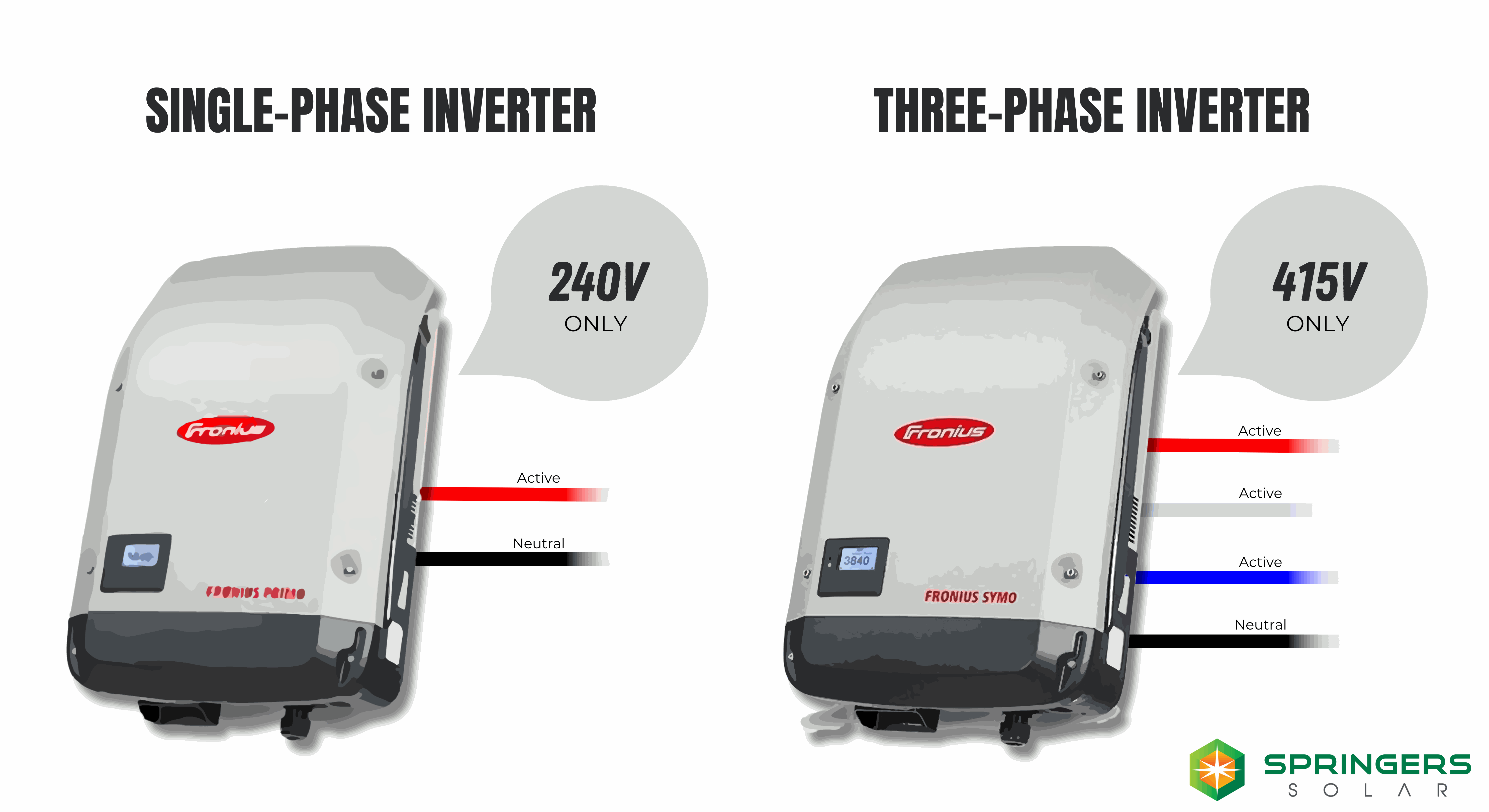.png)
In practical terms, three-phase systems are better suited to handling high-powered electrical equipment, such as industrial machinery or large commercial air conditioning systems as 3x the amount of power is supplied to the premises. Single-phase systems are typically used for residential applications, where power demands are lower.
Read more: Five Reasons Why Installing Commercial Solar Will Benefit Your Business
Read more: The Benefits of Installing a Solar System on Your Home
Another major difference between single-phase and three-phase is the size of the solar system and the export limit that is allowed. On Energy Queensland's network, the total inverter capacity must be no more than 10kVA per phase, and the maximum export no more than 5kW per phase. Keeping within these limits allows for a basic connection and a fast turnaround of approvals. Single-phase properties on a basic connection can therefore have a total of 10kVA generation capacity and 5kW export, two-phase 20kVA and 10kW export and three-phase 30kVA and 15kW export. To go outside of this requires a negotiated connection with the DNSP (Distributed Network Service Providers) which incurs fees as well as causes a lengthy approval process.
*kVA is kilovolt-amps. kW is kilowatts.
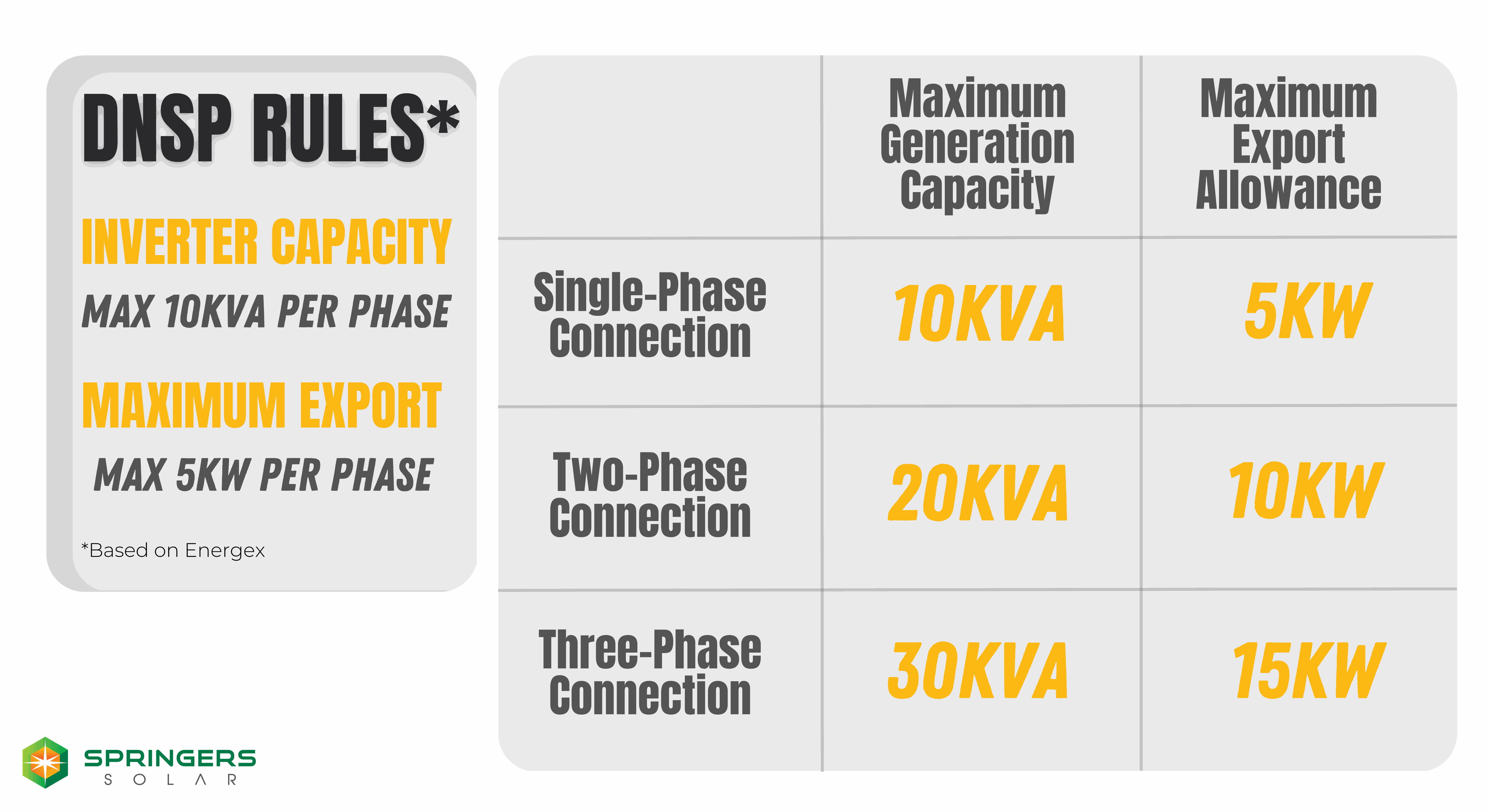.png)
When your property was built, your home or business would have been connected to the grid via either single-phase or three-phase wiring. Most homes have single-phase connections because of simplicity and domestic-level power requirements. Single-phase properties are perfectly capable of powering most of the typical appliances you would find in a home, such as lighting, television, fans, refrigeration, etc.
Some homes have a two-phase supply. While uncommon, they do exist - it simply means that instead of one live wire powering your property, you have two live wires.
Most commercial premises have a three-phase connection. Commercial properties typically have higher energy demands than residential properties, and three-phase systems can provide the necessary power output to meet those demands. Three-phase power supply is also becoming popular for larger homes, where the owners anticipate having high power load appliances.
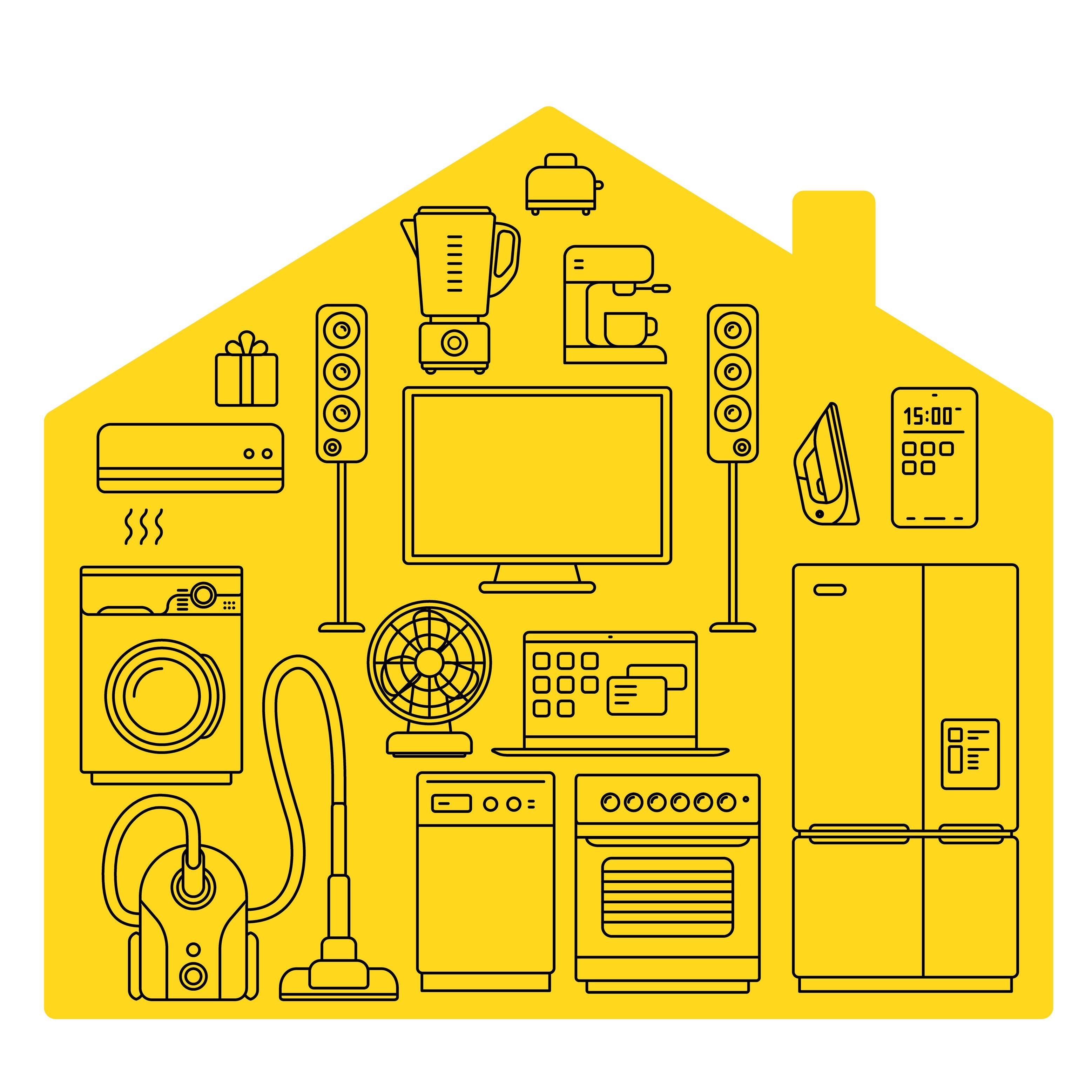.jpeg)
How do I know if my property is single-phase or three-phase connected?
If you’re based in Australia, you can find out whether your property is single-phase or three-phase by checking your electricity bill or your switchboard. The switchboard in your meter box will have either a single-pole or three-pole main switch. If you have a three-pole main switch, you have three-phase power, if you have one, you have a single-phase connection. Simple!
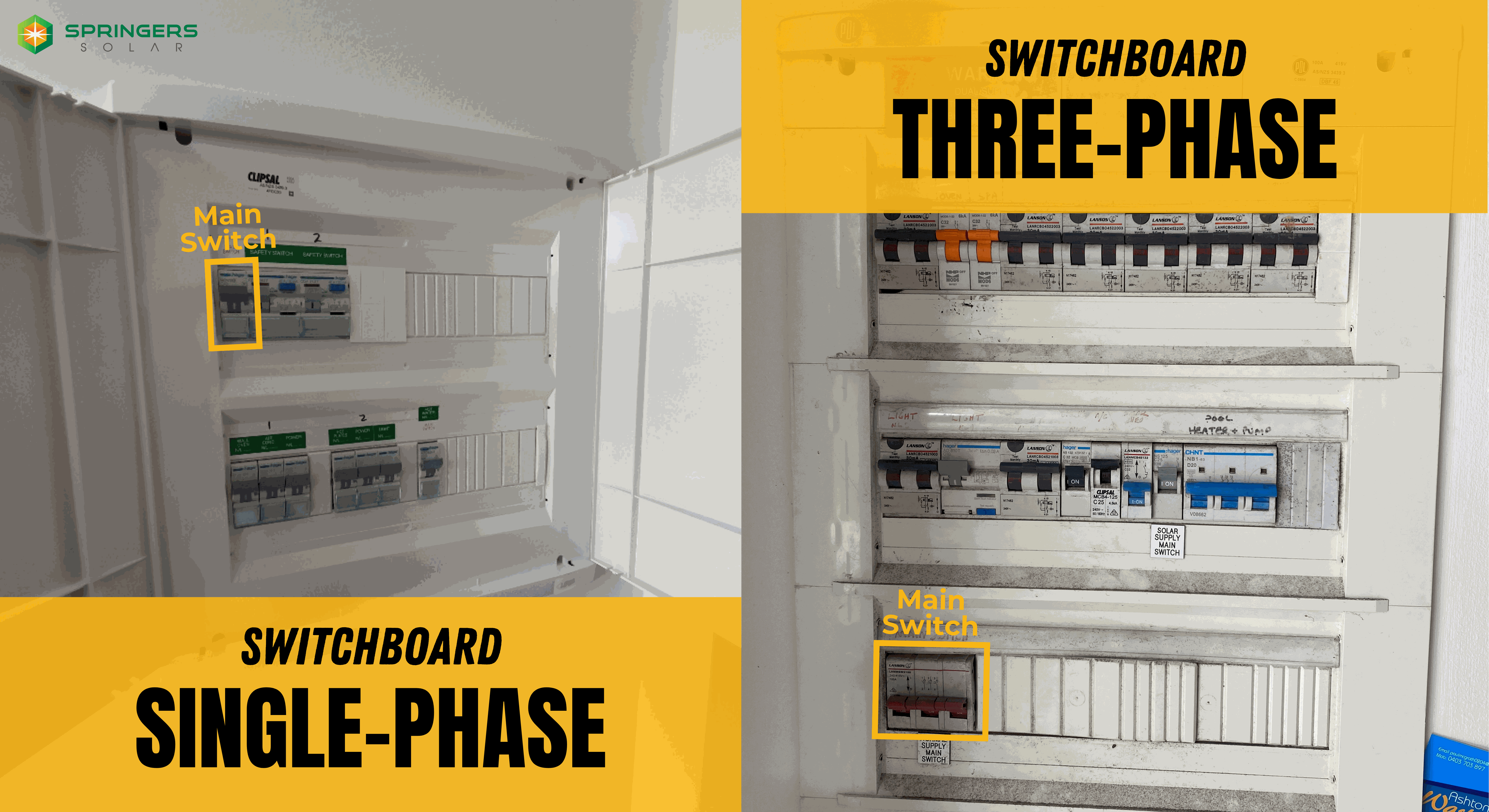.png)
If you’re planning to install a solar system, your solar installer will also be able to determine whether your property is single-phase or three-phase and design a solar energy system that is appropriate for your energy needs.
Can I upgrade my single-phase connection to a three-phase connection?
Yes, it’s possible. Upgrading to a three-phase connection allows you to have a much larger solar system installed and a greatly improved export allowance, as it provides the opportunity to install three-phase equipment at the house in future. For example, if you were considering purchasing an electric vehicle and wanted to charge the car with the fastest charge rates available, then this would require a three-phase charger and supply.
Read more: Can I Add a Solar Battery To My Existing Solar Installation?
However, it’s important to note that upgrading from a single-phase to a three-phase connection can be a complex and expensive process (typically $3500-$5000), so if you’re considering a solar system that requires a three-phase connection, it’s best to confirm the status of your property early (upgrading is often a lengthy process).
Read more: Can I Add a Solar Battery To My Existing Solar Installation?

Upgrading your connection involves installing new electrical wiring and infrastructure, including a new meter and upgrading the switchboard. A connection agreement with the energy provider is also required. The new electrical wiring from the grid may require trenching if overhead wiring is not available. This may not be feasible or cost-effective for every property, so it’s important to speak to a professional to determine whether it is the right option for you.
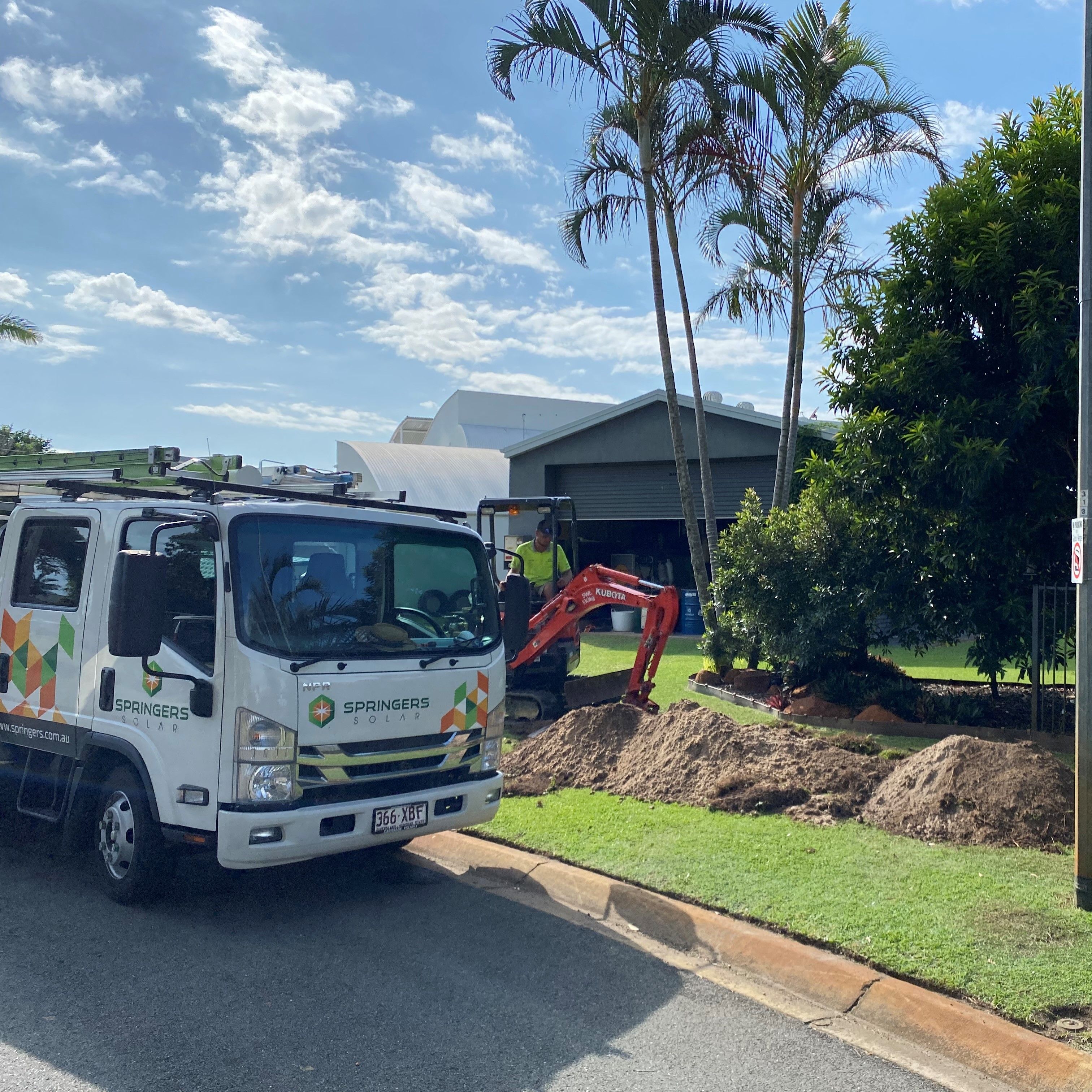.jpg)
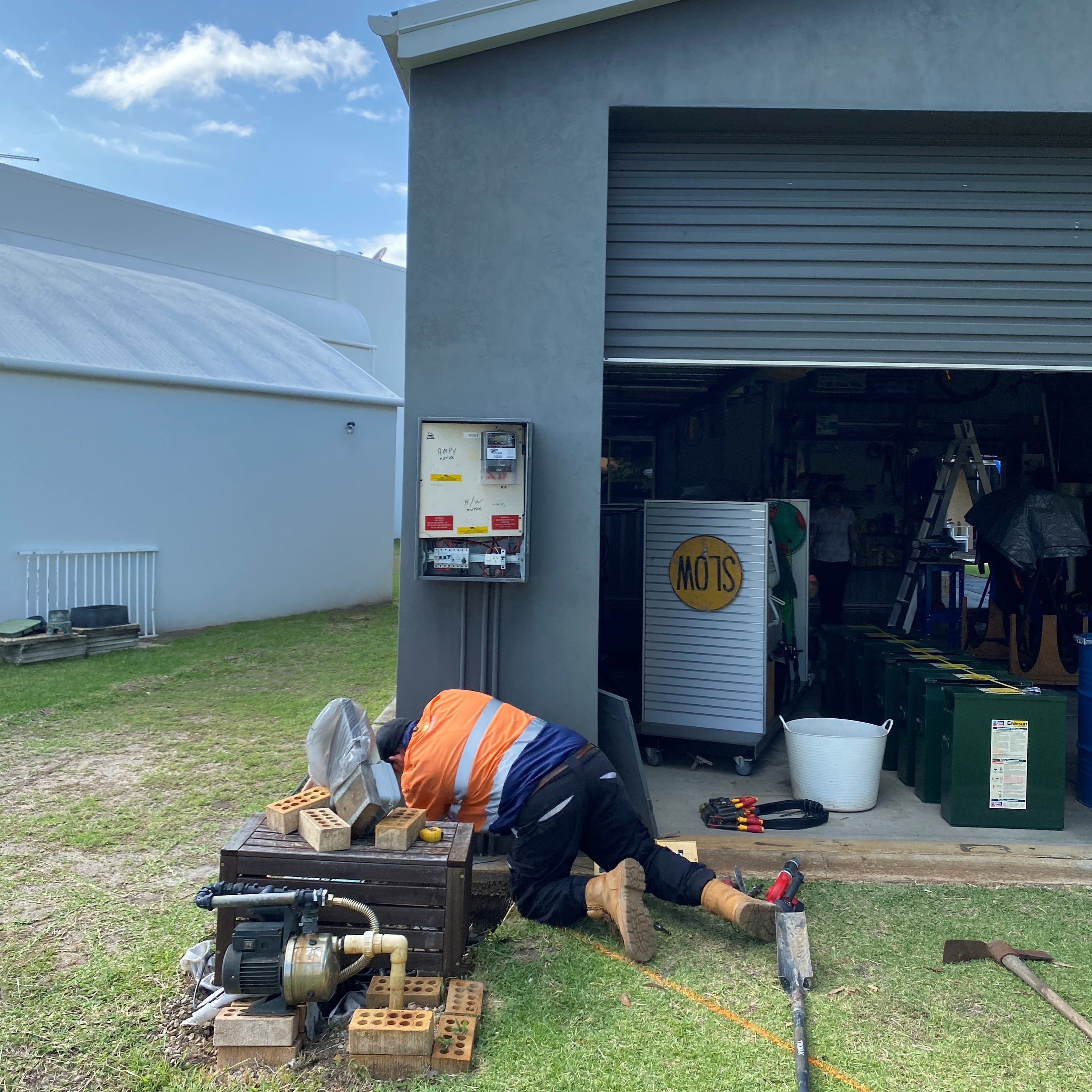.jpg)
Springers Solar completing a three-phase upgrade on a residential property.
Springers Solar can help you with this and can assist you in upgrading your single-phase system to a three-phase in preparation for a three-phase solar system installation or any new three-phase loads you wish to install. If you’re considering upgrading, always ensure you speak to a qualified electrical contractor (contact us here).
Which is better for your home or business: a single-phase or three-phase solar system?
The answer to this question depends on two things:
- Your existing connection
- Your energy needs
Your existing connection will largely determine the type of solar system you can install on your property. If your home or business has a three-phase power supply, then you have the option to install either a single-phase inverter or a three-phase inverter.
If your property has a single-phase or two-phase power supply, then you are limited to single-phase solar systems. It isn’t possible to install a three-phase inverter on a property with a single-phase connection unless you were to upgrade your supply.
If your home has relatively average power demands, a single-phase system is likely to be sufficient. However, if you have commercial premises or a larger home with higher energy needs (and an existing three-phase supply), a three-phase system may be more appropriate. If not, then a three-phase upgrade should be considered because it will enable you to install a larger solar system to offset the higher energy needs as well as provide the ability to power large energy-consuming appliances such as EV chargers.
Commercial properties typically have the need for larger inverter capacity that a three-phase connection can provide, as they have higher energy demands and three-phase systems can provide the necessary power output to meet those demands.
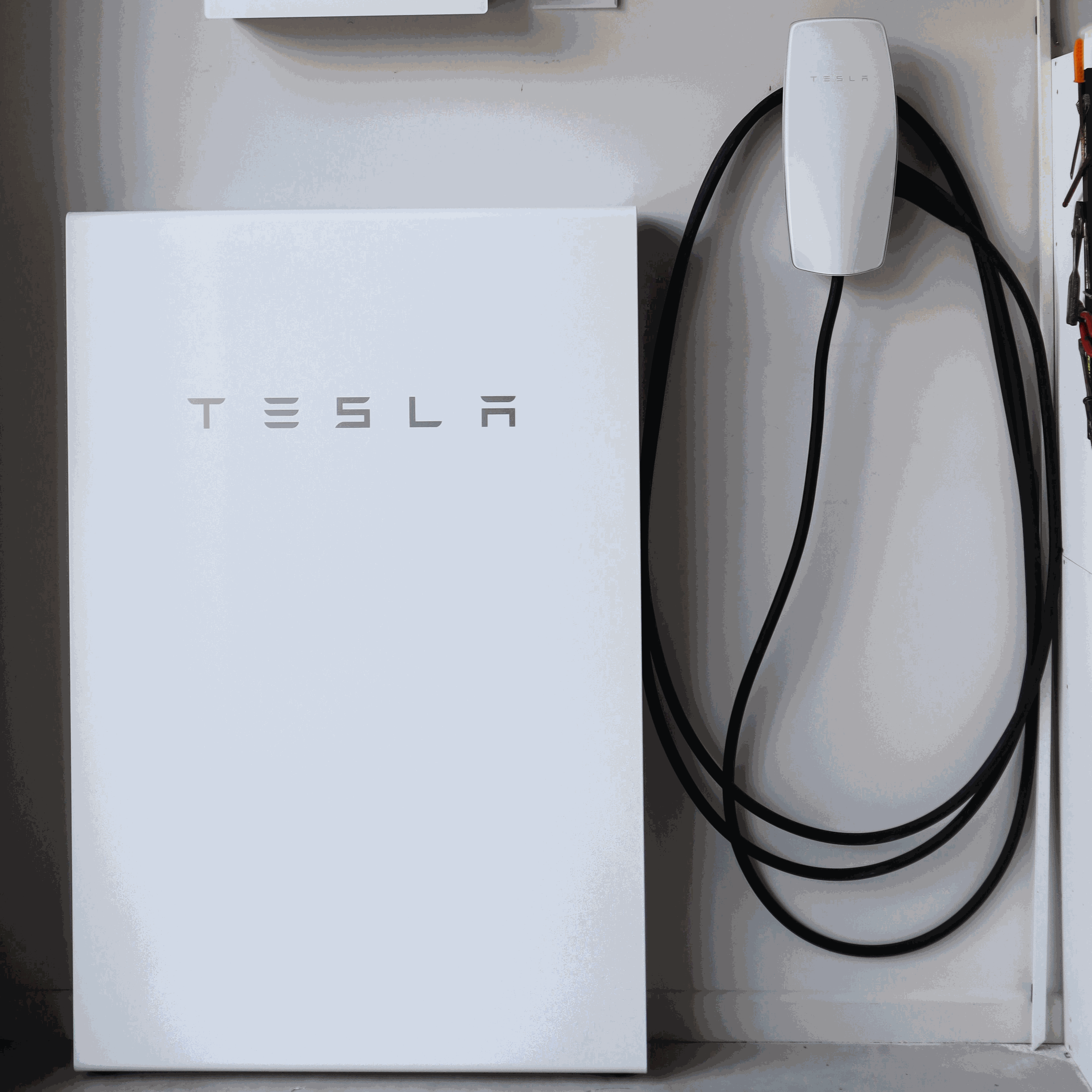%20EDITED.png)
Read more: Solar Bill Savings - How Much Will You Save on Your Power Bill With Solar?
Additionally, commercial premises often have larger roofs or more available space for solar panel installation, making it easier to install a larger solar system. A three-phase system can take advantage of this additional space and generate more energy, leading to greater cost savings and environmental benefits.
Read more: These Iconic Aussie Businesses Are Switching to Solar, And Are Now Saving Over $18k a Year on Bills
Commercial properties may also have high-powered electrical equipment such as air conditioning systems, machinery, and lighting, which require a three-phase power supply. A three-phase solar system can provide this power supply, allowing the property to operate more efficiently and potentially reducing electricity costs.
Read more: EV Chargers: The Next Revenue Stream for Businesses
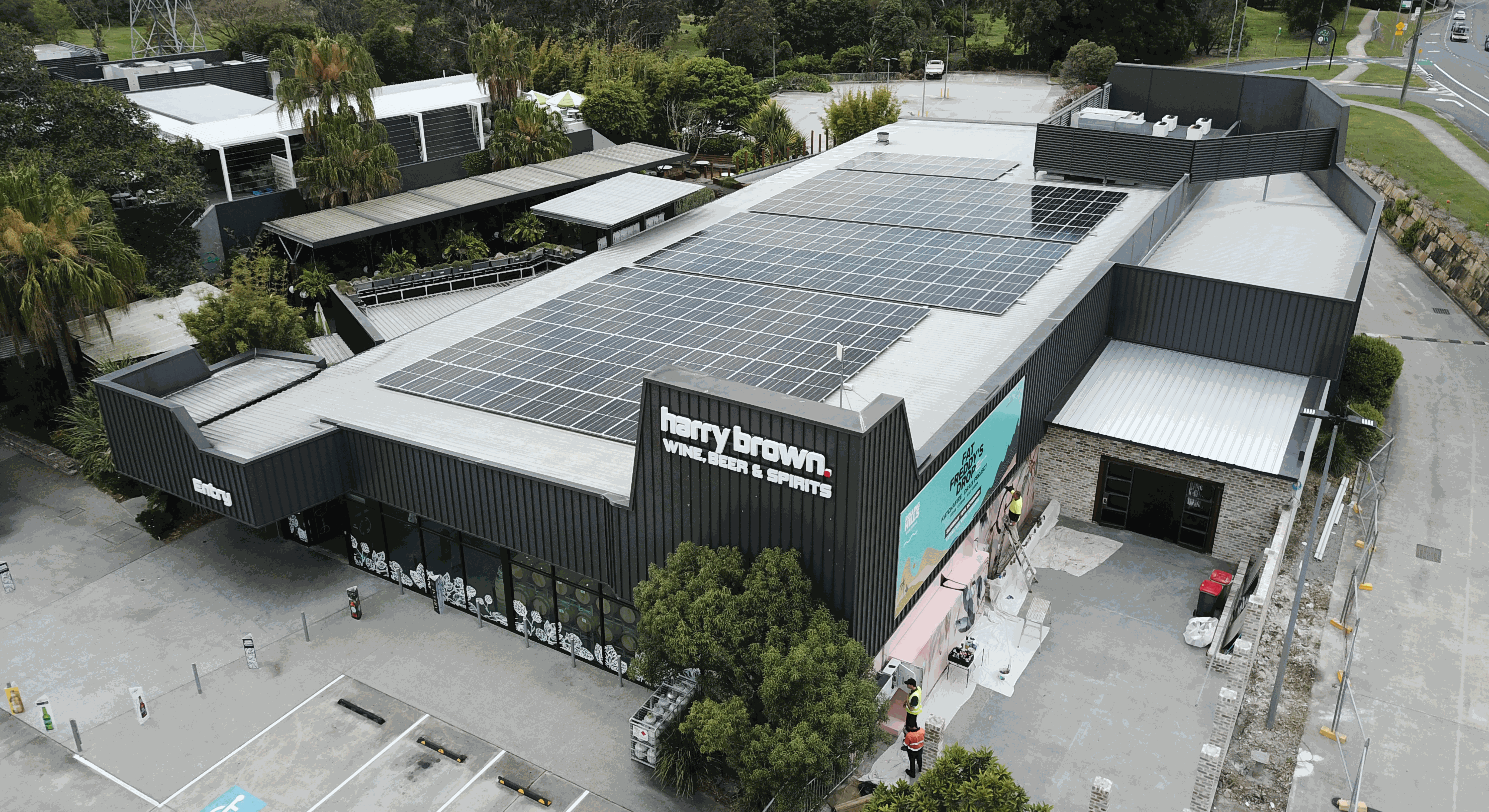
Single-Phase Solar Inverters
In a single-phase inverter, the DC electricity from the solar panels is fed into the inverter, where it is converted to AC electricity with a single-phase output. This AC electricity can then be used to power the property’s electrical system or fed back into the grid.
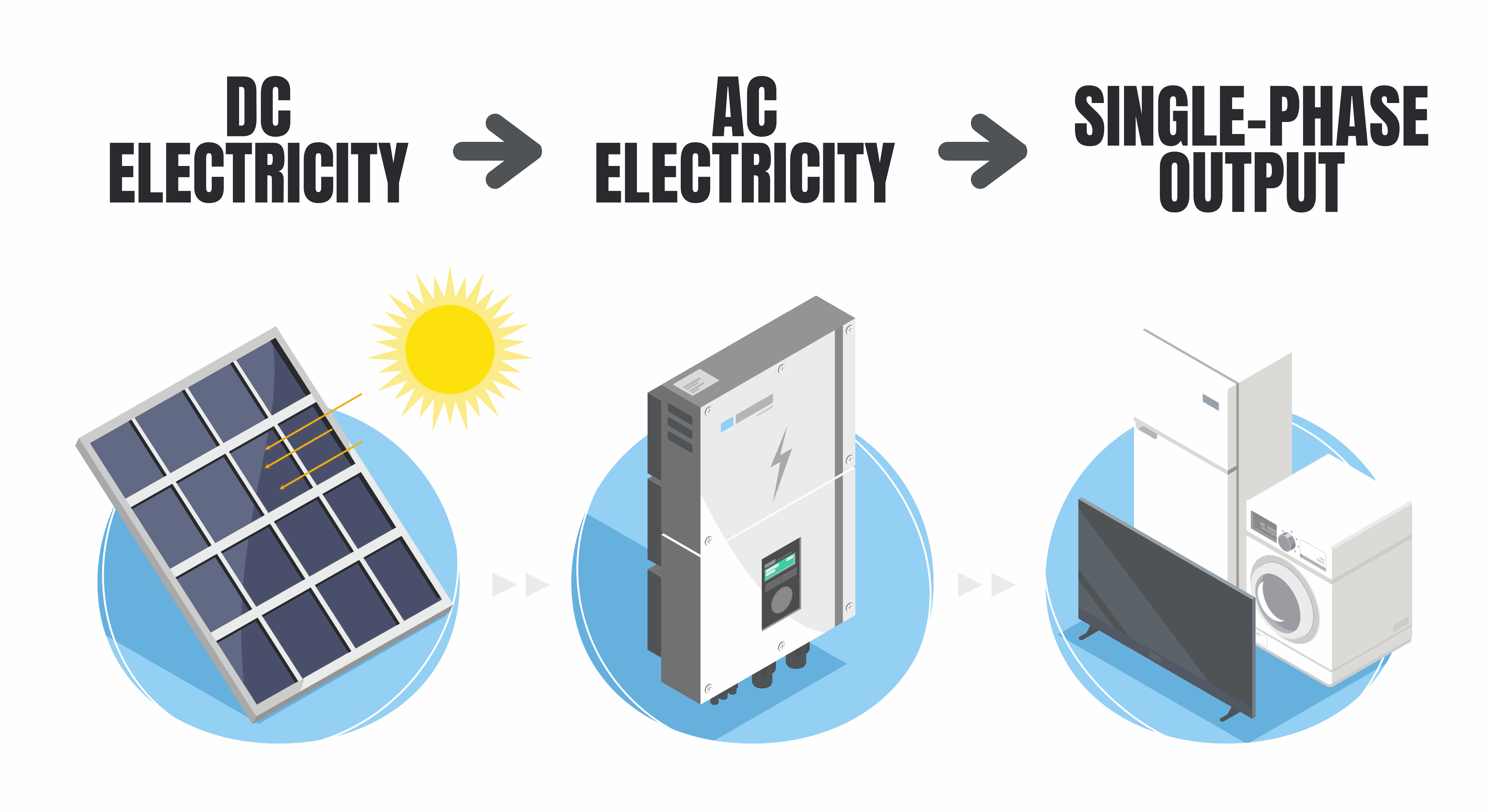
Single-phase inverters are typically used in residential properties that have a single-phase electrical connection. They are designed to handle lower power loads and are less expensive than three-phase inverters.
If you have a single-phase supply to your property, it means you are limited to a 10kW inverter capacity. This is determined by DNSPs, such as Energex or Ergon Energy, who own and maintain an electricity network. They are the entities that grant permission to connect a solar system to their networks.
It is possible to increase the energy yield from a single-phase inverter by oversizing the array, i.e. 13.33kW of solar panels on a 10kW inverter.
In a solar panel system, the capacity of the inverter should be sized to ensure efficient and reliable operation. It’s important to work with a qualified solar installer to determine the appropriate size and capacity of the inverter for your specific solar panel system and energy needs. This ensures that your solar system operates efficiently and reliably, and maximises your energy production and cost savings.
Read more: The Two Best Solar Panels on Offer in Australia 2023
Read more: The Two Best Solar Panels on Offer in Australia 2023
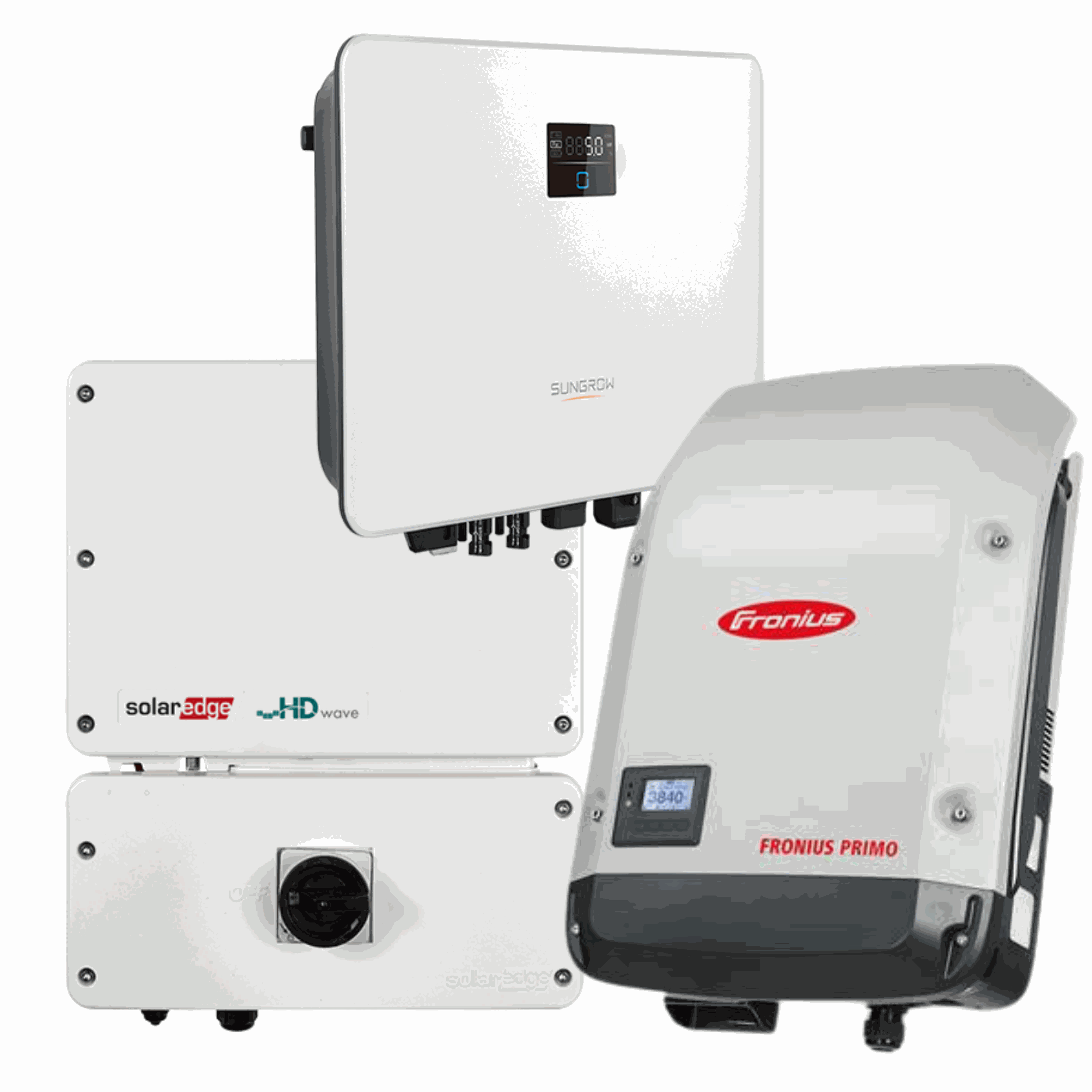
Three-Phase Solar Inverters
In a three-phase inverter, the DC electricity from the solar panels is fed into the inverter, where it is converted into AC electricity balanced across the three-phase output. Three-phase inverters are capable of powering large loads reliably.
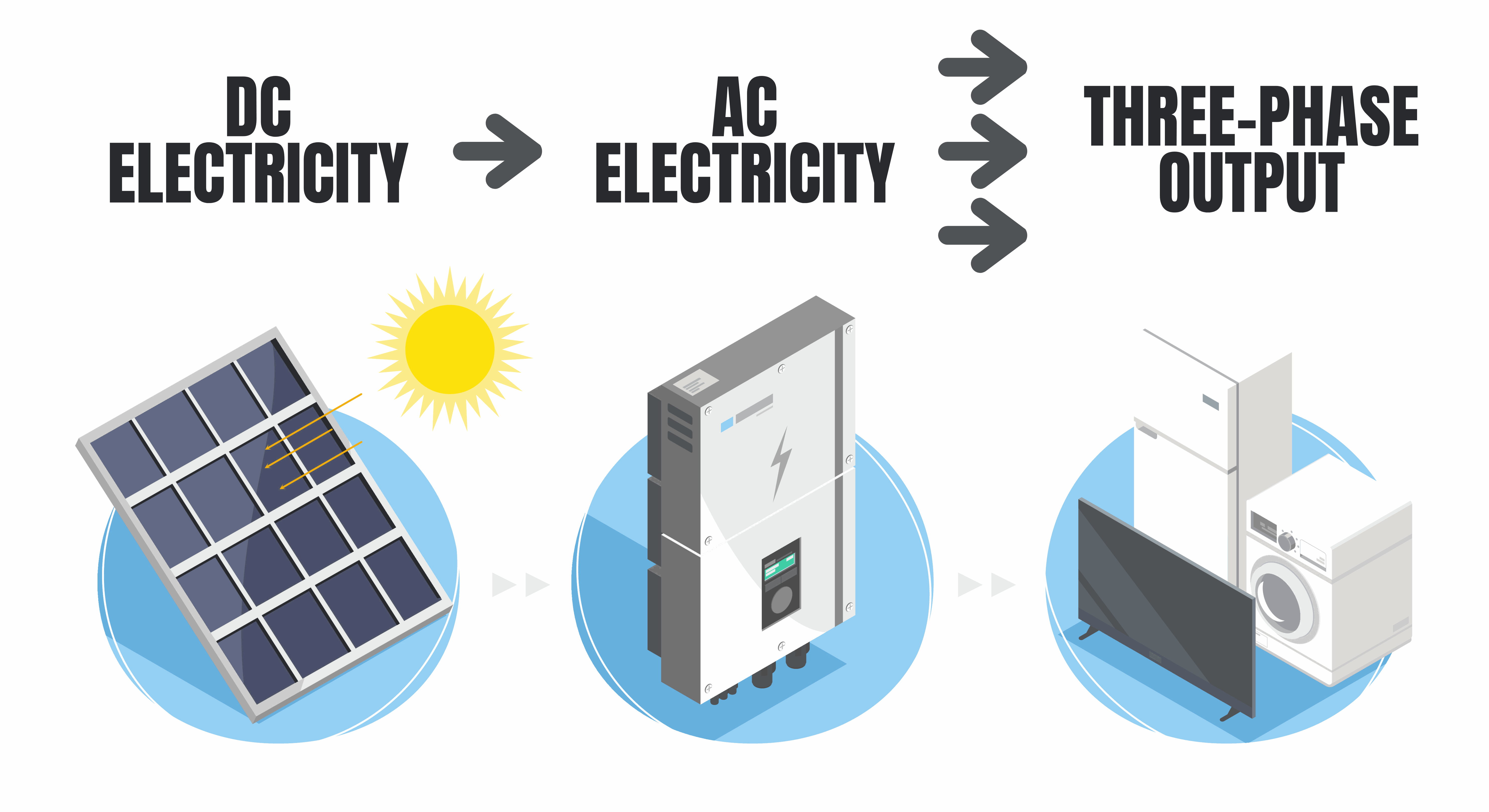
Three-phase inverters do offer some advantages over single-phase inverters for those with the option:
- Higher Power Output: Three-phase inverters are designed to handle high power output from larger solar systems, making them ideal for commercial or large residential applications with high energy demands.
- Greater Flexibility: Three-phase inverters offer greater flexibility in system design, allowing for more options in configuring the solar panel array and optimising energy production. They also allow for greater flexibility in electrical load balancing, which can help prevent overloading of the electrical system and ensure reliable operation.
Still confused? Here's an example scenario:
Let’s apply the above to the real world - here’s a scenario where a residential homeowner with a large bill could choose to either install a single-phase solar system or upgrade to a three-phase connection:
I have a $1,000 per year electricity bill that I want to reduce by installing solar on my single-phase connected home. I have two options:
- Install a solar array with a single-phase inverter - the single-phase limitations (max 10 kW capacity) mean that the solar system will save me around $500 off my yearly electricity bill, which is a moderate reduction.
- Upgrade my home to a three-phase connection which would permit me to install a larger solar array and inverter capacity (up to 30kW). Although the upgrade itself carries a cost of a few thousand dollars, the result is a significant return on investment - the solar array produces ample energy to power my home, reducing the draw from the grid, as well as allows for greater export of power to offset my nighttime loads leading to a far greater reduction, or elimination, of my power bill.
In summary, there is no right or wrong answer - it’s up to you and what your energy goals are. We highly recommend speaking with an expert solar consultant who can complete an analysis of your property and goals to assist you in making an informed decision.
Preparing for future energy loads
You should also consider what your future energy needs may look like, as this could also influence whether single-phase or three-phase is better suited. If you’re planning to install a solar battery, EV chargers, or other high-power loads in the future, a three-phase solar system could be the better choice. This is because a three-phase system can provide high power output, which is necessary for charging electric vehicles and running large battery systems.
A single-phase system may be suitable for smaller battery systems and EV chargers, but if you’re planning on expanding your energy needs in the future, a three-phase system will provide more flexibility and power.
Read more: Store Your Excess Solar Energy With a Solar Battery
Read more: Store Your Excess Solar Energy With a Solar Battery
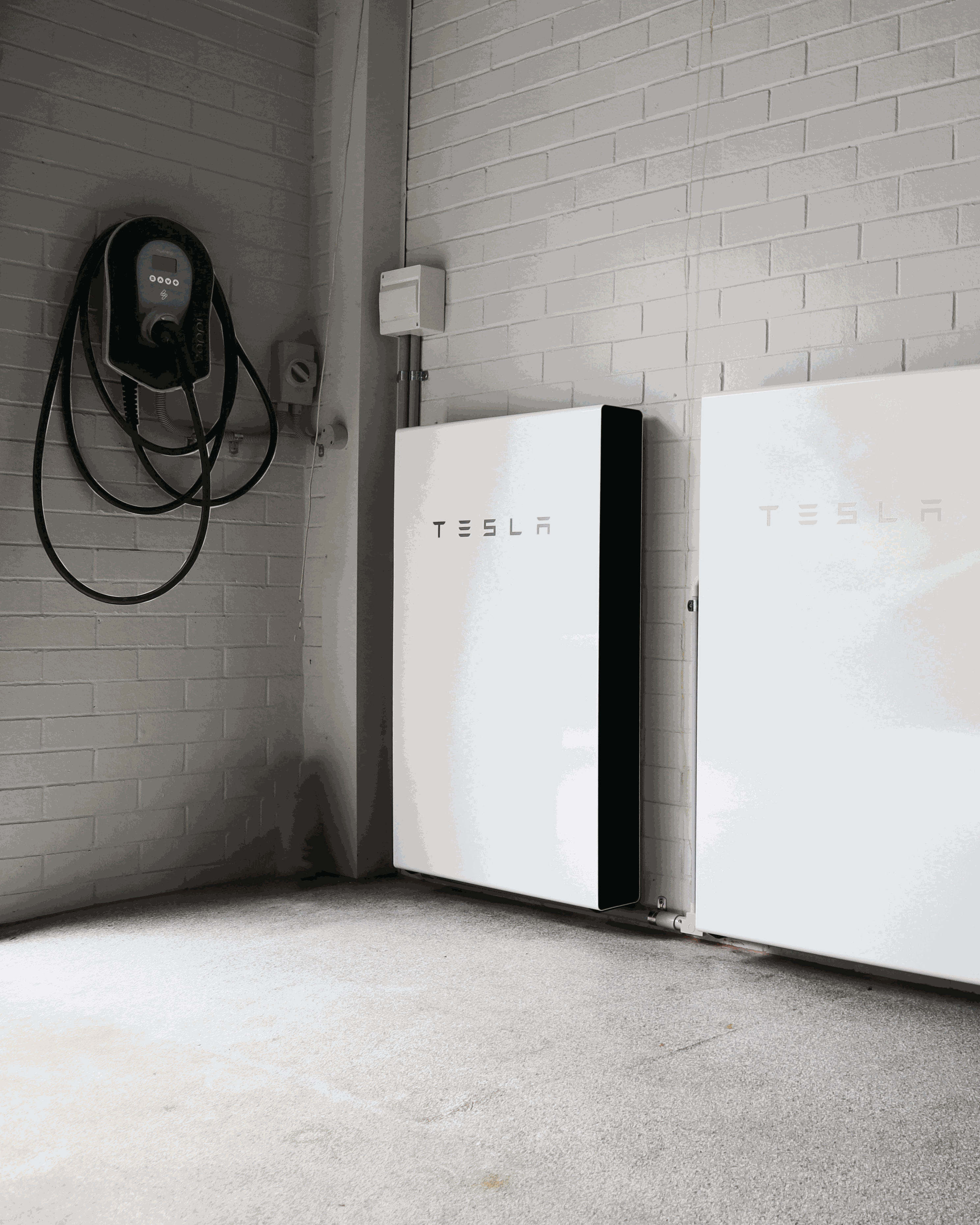
Springers Solar | Queensland's Most Experienced Solar Installer
Springers Solar provides quality components with proven performance, backed by industry-leading warranties, and dedicated after-sales support. Thousands of satisfied customers over more than 21 years of operation makes Springers Solar one of the most established and experienced solar companies in Australia.
Springers Solar has received multiple awards for design and installation, and is a certified/preferred installer for a large range of solar panel, inverter, and solar battery manufacturers, including Tesla, REC, and SolarEdge.
Our dedicated in-house team of electrical engineers, project managers, solar PV designers, solar installers, and electricians work closely with you before, during, and long after your project is completed. Springers Solar offers an industry-leading 10-year workmanship warranty which is a testament to our qualified staff and offers you outstanding peace of mind.
Contact us about anything related to our services using the form below.
We'll get back to you as soon as possible.
Single-Phase VS Three-Phase Solar Systems: What's The Difference?